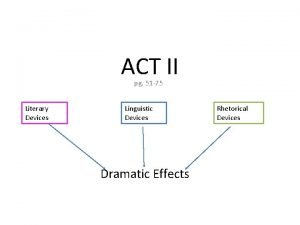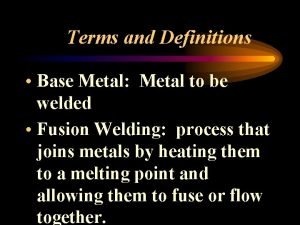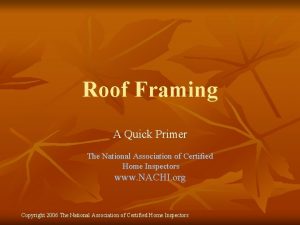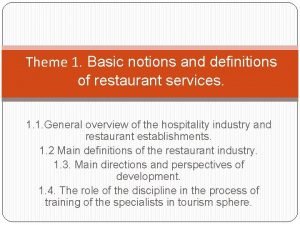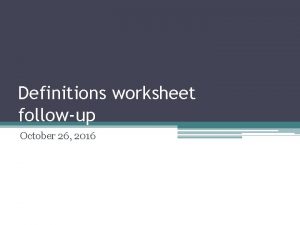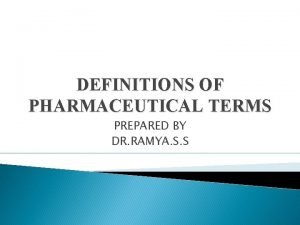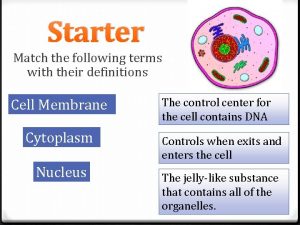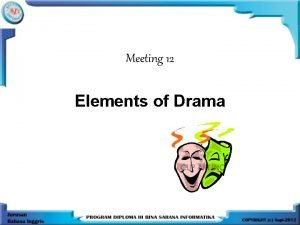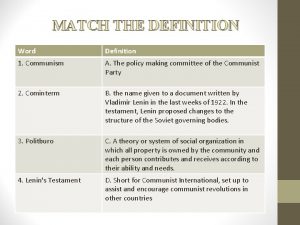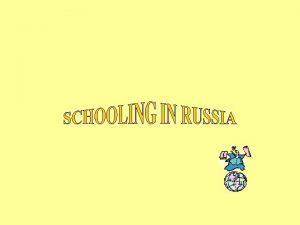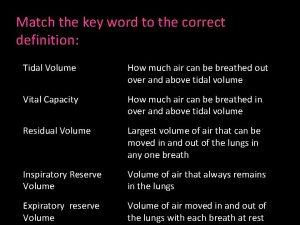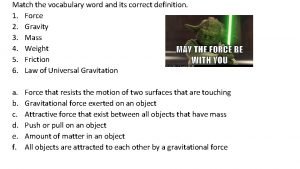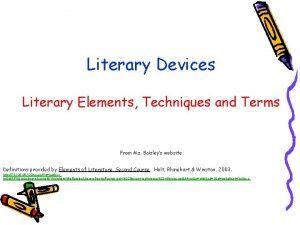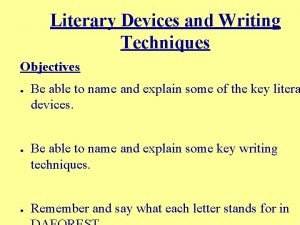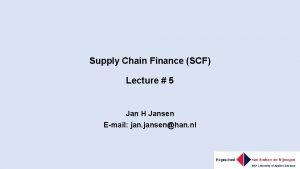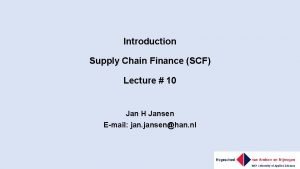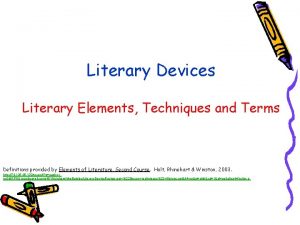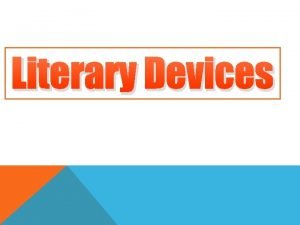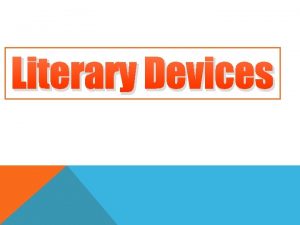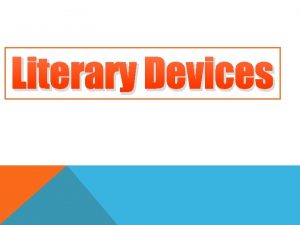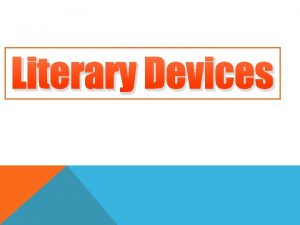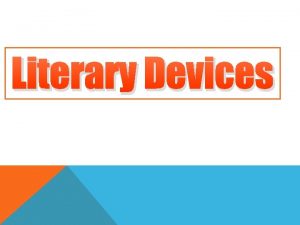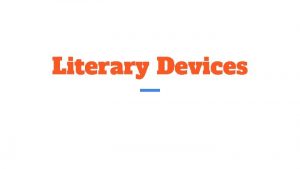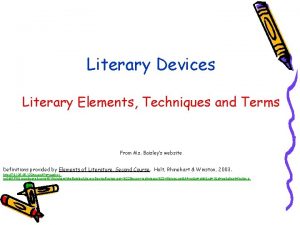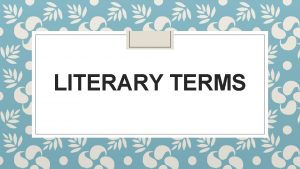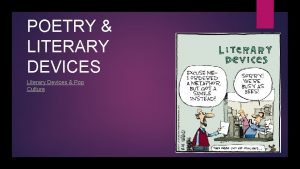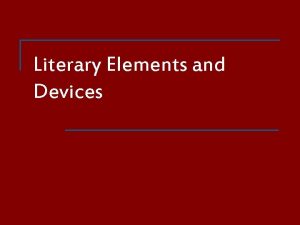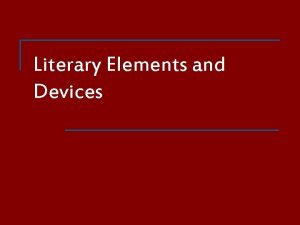Literary Devices Literary Elements Techniques and Terms Definitions


















- Slides: 18

Literary Devices Literary Elements, Techniques and Terms Definitions provided by Elements of Literature, Fifth Course. Holt, Rhinehart & Winston, 2003.

Literary Devices and Terms • A literary devise is any tool used in literature to help the reader understand the story and its character(s). • There are two types of literary devises used by authors, literary elements and literary techniques. • Literary terms provide structure to the literature. All literary elements are evident in all literature that creates a story. • Literary techniques are specific to each author. Authors choose which of the techniques to employ. • Literary terms are not devices. They are simply terms used to understand literature.

Literary Elements Literary elements are common literary devices found in all literature. • • Setting Character/Characterization Conflict – internal/external Language – diction, repetition, imagery • Symbols/Archetypes • THEME

Setting • Setting generally provides the time and place of a specific scene or chapter, the entire story, a play or a narrative poem. • Setting can also include the mood of the time period, situation or event. • Setting can also be the social, political, environmental or emotional climate. • Setting can also include the emotional state of a character.

Character • The term character refers to a person or an animal in a story, play or other literary work. • A Dynamic Character changes as a result of the events of the story. • A Static Character changes very little or not at all through the literary work. • A character’s motivation is any force (i. e. : love, fear, jealousy) that drives the character to behave in a particular way.

Characterization • Characterization is the way a writer reveals the personality of a character. • Characterization is how the author develops and uses the characters to tell a story. • Characterization is often the most important aspect of a story. • The protagonist is the main character in a story. The story often revolves around this character. • The antagonist is the force that or character who opposes the protagonist. • Minor characters are present, generally named and have a role that in some way highlights the protagonist.

Conflict • Conflict is a struggle between opposing characters or opposing forces. • Conflict creates the plot of a story. Conflict is the problem or struggle in a story. There are four general types of conflict in literature: Ø Man versus Man is the conflict of one person against another person. Ø Man versus Nature is the conflict a person encounters with the forces of nature, and shows how insignificant one person can be when compared to the cosmic scheme of things. Ø Man versus Society is the conflict of a person/people and the views of society. Prejudice/Racism is a good example. Ø Man versus Self is internal conflict. It is those conflicts an individual has with his conscience.

Climax Rising action Falling action Resolution Exposition Plot Diagram

Literary Techniques • Literary techniques are used to produce a specific effect on the reader. • Authors often use a variety of techniques throughout a piece of literature.

Dialogue • Dialogue is conversation between two or more characters. • Dialogue is when a character speaks to another character. • Dialogue is conversation. • Dialogue can include when a character speaks out loud to an animal, an inanimate object or him or herself. • Dialogue can be used to explain something to the reader/audience.

Dialect/Diction • Dialect is the way of speaking that is characteristic (specific to) of a certain geographical area or a certain group of people. • Diction is the author’s word choice. It can be formal/informal, ornate/plain, positive/negative, abstract/concrete.

Imagery • Language that appeals to the senses. • Imagery is when words or language is used to appeal to one or all of the five senses – sight, touch, taste, smell or sound.

Irony and Dramatic Irony • Irony is the contrast between expectation (what is expected ) and reality (what actually occurs). • Dramatic Irony occurs when the audience or reader knows something a character does not know. • In “The Diary of Anne Frank”, the audience knows the fate of its characters. The characters, however, continue to discuss what they will do when they are free – Anne wants to ride a bike and go to Paris. Our knowledge that this will not occur is dramatic irony.

Refrain/Repetition • Repetition is when a word, phrase of line is repeated within the text in close proximity. • Repetition is used to emphasize or add special meaning to what is being said. • Repetition makes the reader consciously aware of a point being made by the author or the character.

Symbol/Symbolism • A symbol is a person, a place, a thing, or an event that has meaning in itself and stands for something beyond itself as well. • Symbols are commonly known as representing the other item. • Examples: The bearstone in Bearstone by Will Hobbs is a symbol of luck and strength to the Ute. The peach trees are a symbol of Walter’s love for his wife.

Tone • Tone is the attitude a writer/author takes towards his or her subject, characters and audience. • Examples of an author’s tone include, but are not limited to: humorous, passionate, sincere, solemn, and anger.

Allusion • A reference to a statement, a person, a place, or an event from literature, the arts, history, religion, mythology, politics, sports or science. • Author’s expect a reader to understand the allusion, think about the allusion and the literature to make connections.

Theme • Theme is the general idea or insight about life that a work of literature reveals. • Theme is a main idea or strong message tied to life. • Theme threads itself through a story, chapter or scene to make a point about life, society or human nature. • Theme is typically implied rather than blatant. The reader has to think about it. • Generally, there is one major theme in a piece of literature. Additional themes can often be found in a piece of literature.
 75 literary terms elements and devices
75 literary terms elements and devices Literary devices vs techniques
Literary devices vs techniques The correct shutoff procedure for an oxyacetylene torch is:
The correct shutoff procedure for an oxyacetylene torch is: Framing terms and definitions
Framing terms and definitions Undefined terms definition
Undefined terms definition Restaurant terms and definitions
Restaurant terms and definitions Undefined terms and basic definitions worksheet answers
Undefined terms and basic definitions worksheet answers Pharmaceutical definitions and terms
Pharmaceutical definitions and terms Match the terms with their definition
Match the terms with their definition William shakespeare drama name
William shakespeare drama name What is communism in simple words
What is communism in simple words Match the words with the correct definitions.
Match the words with the correct definitions. Match the terms below with their correct definitions
Match the terms below with their correct definitions Match each latin phrase to the correct definition.
Match each latin phrase to the correct definition. Imaginative comparison examples
Imaginative comparison examples Literary devices review
Literary devices review Literary elements and techniques
Literary elements and techniques Dynamic discounting definition
Dynamic discounting definition Standard definitions for techniques of supply chain finance
Standard definitions for techniques of supply chain finance
